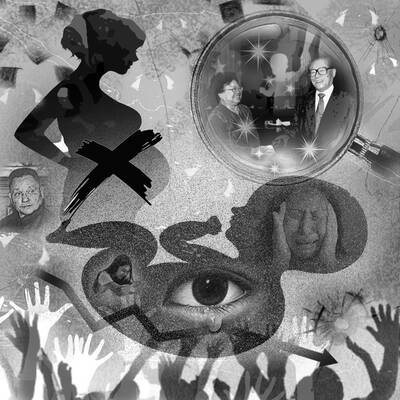Norwegian massacre suspect Anders Behring Breivik obviously knows less than he thinks he does about Taiwan, or he wouldn’t hold it up as a model of monoculturalism, a problematic and highly improbable political philosophy to begin with.
In a 1,500-page manifesto that he e-mailed before he allegedly detonated a car bomb in Oslo and gunned down dozens of young people on an idyllic island, Breivik repeatedly referred to Taiwan’s so-called anti-immigration policies as a model for Europe, lumping this nation with Japan and South Korea and praising their adherence to racial purity.
What a farce.
Breivik knows little about the dynamic in Asia. If you were to put a Filipino, a Chinese, a Japanese, an Indonesian, a South Korean and a Thai next to each other, Breivik would likely applaud the group for keeping its racial identity pure.
Breivik, in his hate for anybody not European, not Christian and not white, looked around the world for superficial examples that would support his warped vision of reality. Somehow he lit upon Taiwan, maybe because it does have somewhat stricter immigration policies than some Western countries.
However, these policies do not make this nation a monoculturalist society. In Taiwan at the moment, there are hundreds of thousands of foreigners. The majority of them come from Southeast Asia and China. Tens of thousands of cross-cultural marriages are now providing one of the most reliable sources of newborn babies in a nation that has a plummeting birthrate.
Although foreigners from all over the world — Westerners, Africans, Asians and South Americans — might find it difficult to become Republic of China citizens, they have the right to look for employment, gain residence and eventually gain permanent residency. They are allowed to own property and invest in businesses. Calling Taiwan a country that maintains racial purity is a gross misunderstanding of the facts.
When was Taiwan ever a racially pure nation? Premier Wu Den-yih (吳敦義), in his rambling way — saying Taiwan possessed a “juicy culture” — had a point: Taiwan has absorbed the cultures of many parts of the world. First there were the Aboriginal tribes, then an inflow of Han Chinese, many of whom married Aborigines. The Han were followed by Dutch and Spanish influences, then more waves of Chinese, not all of whom spoke the same language. Taiwan was then colonized by the Japanese, who left many imprints in the culture and society, before the Chinese Nationalist Party (KMT) brought yet another version of Chinese culture that allowed and encouraged Taiwanese to embrace aspects of US culture.
What Taiwan has been left with is a fairly vibrant culture that is abundantly open and friendly to outsiders, and readily incorporates aspects of foreign cultures. This is far different from the monoculturalist society that Breivik envisioned, and that’s before mentioning the mix of religions found in this nation: animist, Buddhist, Taoist, Christian and Muslim.
Taiwan, Japan and South Korea are safe, comfortable places to live, not because their societies restrict foreign influences, but because their societies have inculcated a good set of morals into their people.
Breivik was looking around for an excuse to justify his murderous rampage and hopes to find modern-day examples of some mythical racist society he believes Nazi Germany could have created. It would be best if he didn’t look to Taiwan, because this place is nothing like what he envisions. In fact, it’s unlikely his ideal for a country exists anywhere on this planet.
We are used to hearing that whenever something happens, it means Taiwan is about to fall to China. Chinese President Xi Jinping (習近平) cannot change the color of his socks without China experts claiming it means an invasion is imminent. So, it is no surprise that what happened in Venezuela over the weekend triggered the knee-jerk reaction of saying that Taiwan is next. That is not an opinion on whether US President Donald Trump was right to remove Venezuelan President Nicolas Maduro the way he did or if it is good for Venezuela and the world. There are other, more qualified
The immediate response in Taiwan to the extraction of Venezuelan President Nicolas Maduro by the US over the weekend was to say that it was an example of violence by a major power against a smaller nation and that, as such, it gave Chinese President Xi Jinping (習近平) carte blanche to invade Taiwan. That assessment is vastly oversimplistic and, on more sober reflection, likely incorrect. Generally speaking, there are three basic interpretations from commentators in Taiwan. The first is that the US is no longer interested in what is happening beyond its own backyard, and no longer preoccupied with regions in other

Jan. 1 marks a decade since China repealed its one-child policy. Just 10 days before, Peng Peiyun (彭珮雲), who long oversaw the often-brutal enforcement of China’s family-planning rules, died at the age of 96, having never been held accountable for her actions. Obituaries praised Peng for being “reform-minded,” even though, in practice, she only perpetuated an utterly inhumane policy, whose consequences have barely begun to materialize. It was Vice Premier Chen Muhua (陳慕華) who first proposed the one-child policy in 1979, with the endorsement of China’s then-top leaders, Chen Yun (陳雲) and Deng Xiaoping (鄧小平), as a means of avoiding the
As technological change sweeps across the world, the focus of education has undergone an inevitable shift toward artificial intelligence (AI) and digital learning. However, the HundrED Global Collection 2026 report has a message that Taiwanese society and education policymakers would do well to reflect on. In the age of AI, the scarcest resource in education is not advanced computing power, but people; and the most urgent global educational crisis is not technological backwardness, but teacher well-being and retention. Covering 52 countries, the report from HundrED, a Finnish nonprofit that reviews and compiles innovative solutions in education from around the world, highlights a